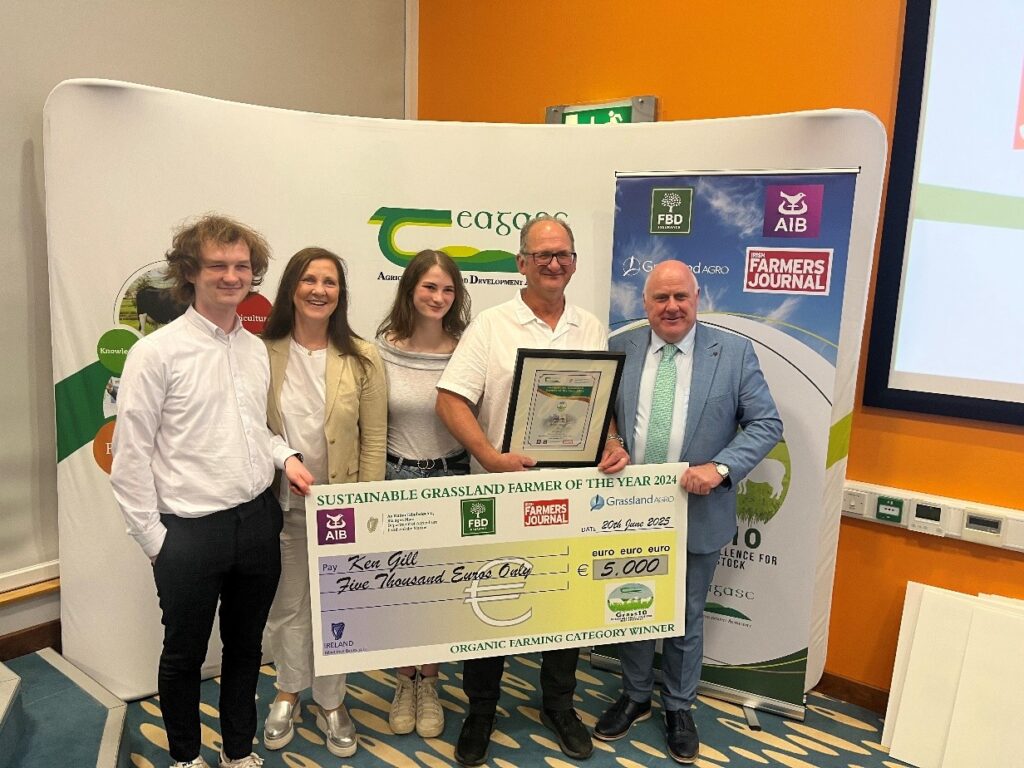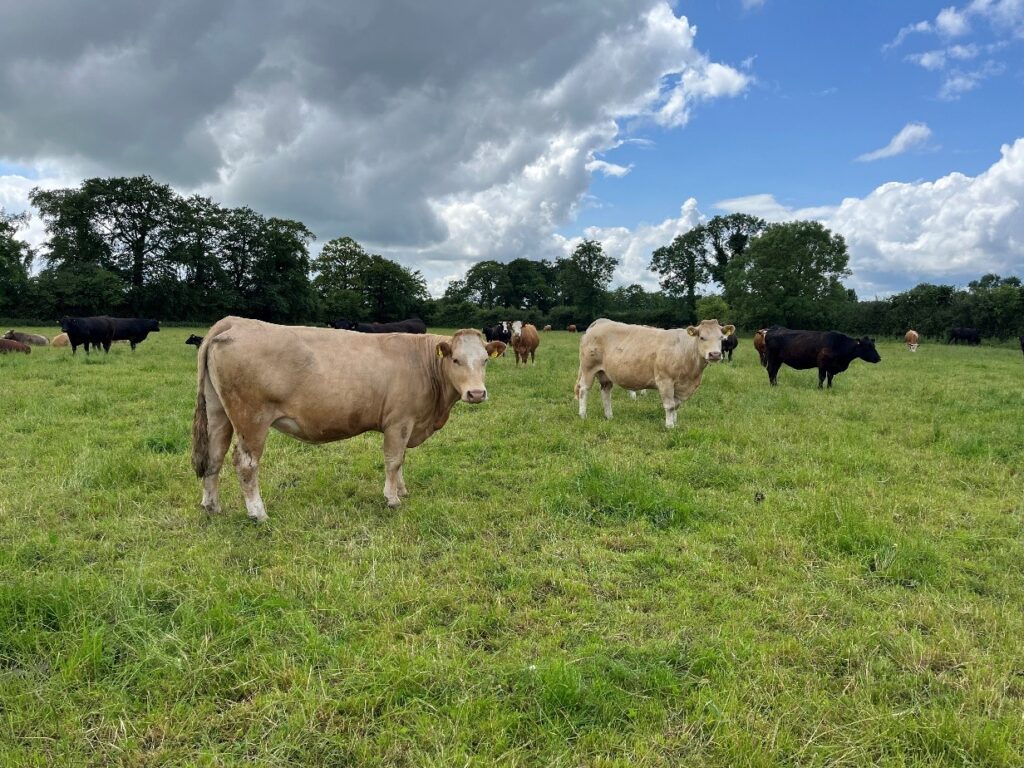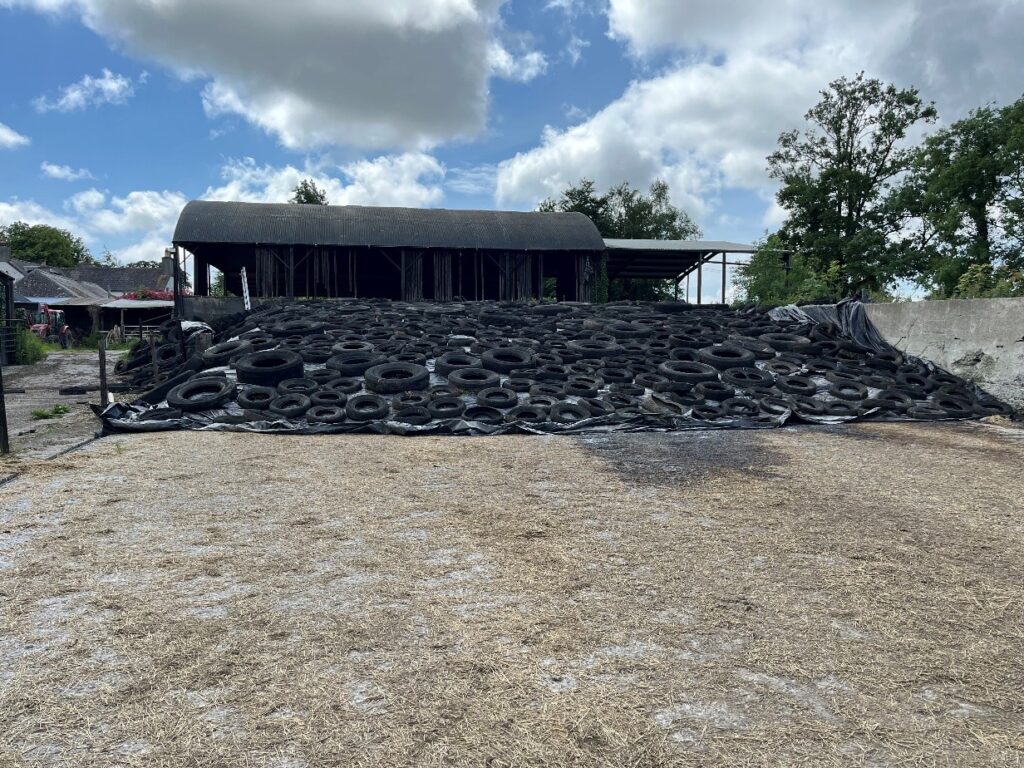Media
- Award for Sustainable Grassland Farmer of the Year 2024 for the Organic farming category
- Presented by Minister of State at the Department of Agriculture Noel Grealish
- Awards are part of the Grass10 programme
Ken was awarded the Sustainable Grassland Farmer of the Year 2024 for the Organic farming category in Teagasc Moorepark on 20th of June. The awards were presented by the Minister of State at the Department of Agriculture Noel Grealish.
The Sustainable Grassland Farmer of the Year awards recognises the best grassland farmers in the country, and is now in its eighth year. These farmers are growing and utilising more grass on their farms, contributing to sustainable livestock production systems. The awards are supported by the Department of Agriculture, with an overall prize fund of €40,000.
The awards are part of the Teagasc Grass10 campaign, which is supported by the Department of Agriculture, Teagasc, AIB, FBD, Grassland Agro, and the Irish Farmers Journal.

Figure 1: Ken is pictured with his award with his wife Celine, son Ultan, daughter Elodie and Minister for State at the DAFM Noel Grealish.
Breeding/Calving
Calving is due to start on 7th August on Ken’s farm. The cows are continuing to clean out paddocks in a leader follower system behind the store cattle, who are following the 2024 born weanlings.
The in-calf heifers and cows were given their vaccinations against leptospirosis at the end of April. The heifers followed a 2 shot programme 4-6 weeks apart, while the cows were given one booster vaccine.
The cows and in calf heifers have been treated once with Spot-on to help deter flies and prevent summer mastitis. There are also garlic licks provided to them to serve the same purpose. So far both measures have worked well, with no cases of summer mastitis reported on the farm so far.

Figure 2: Dry cows are grazing behind younger cattle
All of the sheds have been power washed since April/May and given time to dry out. A straw bedded area will be available for any cows or heifers that may need extra monitoring or assistance around calving time.
Ken had an animal health and heat monitoring system (Sensehub) installed on his farm at the end of June. This consists of a portable base station that’s powered by a solar panel and collars which are on the cows. The base station is typically installed in the farm yard but because Ken’s yard is surrounded by trees, it would have interrupted the signal. Therefore by making it portable he can move it around with the herd so that there is 24 hour monitoring of the herd.
The system sends a notification to Ken if an animal is experiencing a health issue, is in distress or is in heat. He also found that one collar was incorrectly fitted on a cow and was notified of this so that he could fix it on her in the crush. The system monitors 10 behaviours which include side lying, low activity, medium activity, high activity, eating (different when inside), rumination, walking, grazing, heavy breathing/panting and abnormal behaviour.
Ken is eligible for a 60% TAMS grant through the Organic Capital Investment Scheme which he has applied for. As the system is regarded as portable, Ken was able to buy it before receiving approval which he expects in the autumn. He also wanted to have it in place at least 2 months before the breeding season is due to start. The TAMS reference costs are currently €2833 for the base station and €112.25 per collar/tag/bolus.

Figure 3: Cows with their new collars
First cut silage was made on the 5th of May. The average yield was 6.7 t DM/ha which was very good, but Ken has noticed that the silage pit isn’t as full as usual. There is extra land in spring oats this year which will affect his silage production so he will be monitoring the fodder budget closely. He also has a further 2 cuts of red clover silage to make, will be cutting surplus paddocks and will have feed for the pea/wheat crop also.

Figure 4: Silage pit made from first cut
The latest grass wedge shows that Ken has a farm cover of 699 kg DM/ha, with a growth rate of 44 kg DM/ha and a demand of 26 kg DM/ha. He is expecting the grass growth to increase as the covers are increasing on the first cut silage fields that are now back in the rotation, so he will be happy to cut silage on stronger paddocks as they come fit. He has 27 days ahead as result of this.

Figure 5: Grass wedge on 25th June 2025
Weeds are a slight issue on the farm this year so Ken is topping fields high so as not to affect grass growth, but to help control the thistles specifically.